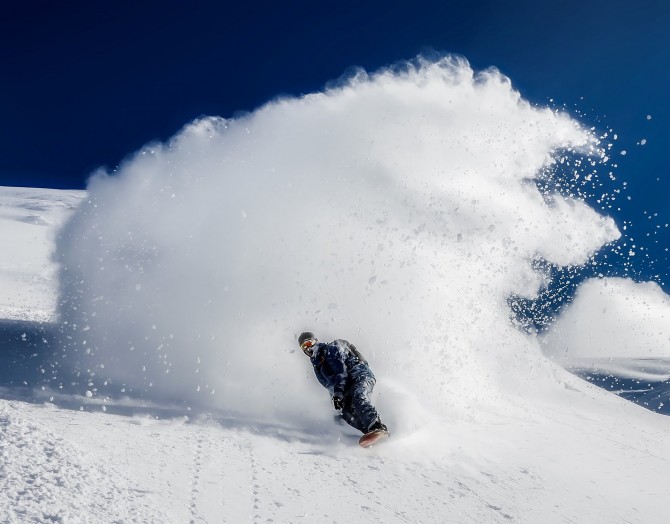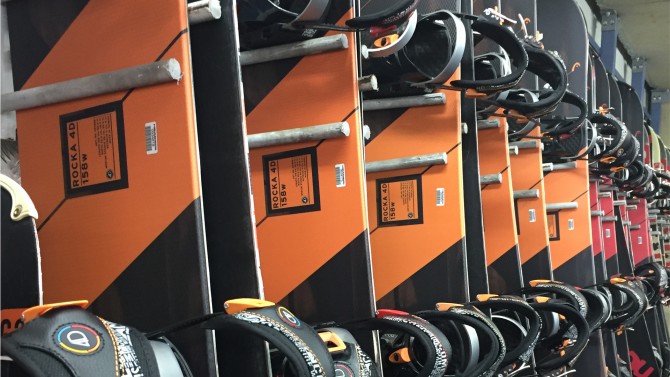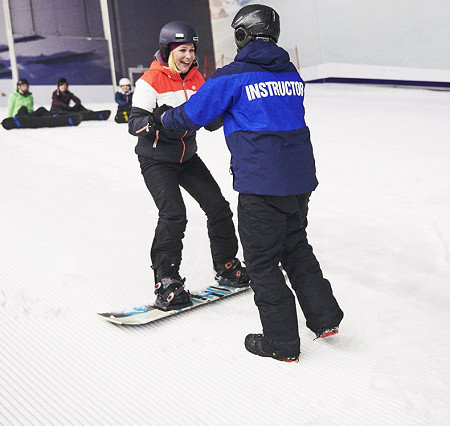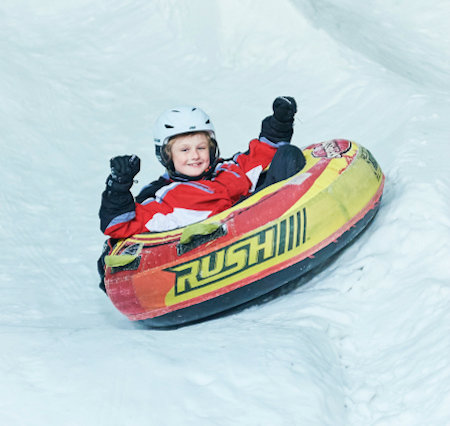How To Wax My Snowboard
13 January 2020

Why do you need to wax your snowboard?
Well, most snowboarders will know that waxing a snowboard on a regular basis increases the life of the board and helps to keep it sliding for longer. It also improves the riding experience.
Instead of visiting a snowboard shop to get the job done, you can wax your snowboard at home yourself. This will save you some cash, but also give you the assurance that it’s done to your standards; which will be high, since it is your snowboard and you love it!
Your snowboard needs an immediate wax job if it starts to feel grippy and sluggish on the snow. Another good indicator for when it’s time to wax your snowboard, is if other riders begin zooming past you on the slopes and you're shredding as hard as you can; this probably means your snowboard is overdue for a good waxing. You can also tell if your snowboard needs waxing by the appearance of dry patches on the board’s base.

How to wax my own snowboard?
You should generally wax your board every third of forth time you hit the slopes. The process takes about an hour or so, from start to finish and can be easily completed in your home. Follow the steps below to pick up the pace and start shredding faster on a freshly waxed board!
What you need for waxing your snowboard
Buy a waxing kit (Around £40 without iron & £70 with an iron) This usually also contains;
Edge tuning tool and 10’’ file
Wire file cleaning brush
Metal scraper and 10’’ wax scraper
Pocket stone
Two P-tex sticks
wax bar
Scuff pad
You could make a one off investment in a snowboard specific waxing iron, which has good temperature controls, better suited to the purpose of waxing your board, and then you won’t get any sudden temperature fluctuations. Also, waxing irons have a very thick base which gives a better distribution of heat than a standard iron. This allows the board to absorb the maximum amount of wax.
If you do not have a specialized iron and cannot buy one, use an old, flat based clothes iron which does not have steam ejection holes. You need to test these irons beforehand by placing it to heat at its lowest temperature, then pressing the wax blob near its base. If you see smoke, then the iron won't do, because it will burn the wax due to its flimsy base. If your clothes iron works, then never use it on your clothes again, unless you want waxy clothing.
Types of snowboard wax
Your choice of wax should depend on the type of snow that you snowboard on; cold, warm, piste, powder or even indoors? As a beginner, it is better to use an all-purpose wax variety for the first few waxing attempts and then move onto something more style specific as you improve.
Here are a few wax product ideas:
ZUMWax Rub On Wax for Snowboard
Don’t Eat Yellow Snow Snowboard/Ski Wax
Purl Ski/Snowboard Wax All temp
Swix LF 4X Race Snowboarding Wax
Swix Bio Degradable Snowboard Wax
Visit Snow & Rock, Absolute Snow and even Amazon to pick up some of these waxes and other waxing tools.
Alternatively, the SNOcoat Performance Treatment Kit at £39.99 contains:
SNOcoat Pre treatment
SNOcoat Coating
Cotton Cloth
Non Latex Gloves
Face Mask
Instructions
3 x Stickers (Various sizes)
A step by step guide to waxing your snowboard
Remember, no matter which method you choose to wax your snowboard, always do it in an airy and open area to avoid inhaling any harmful fumes that come from melting the wax.
- The first thing you need to do is to place your snowboard on a work bench. The base of the snowboard should be facing upwards and the work bench should be at a comfortable height for you.
- Next, clean your snowboard! Use base cleaner and a rag to remove dirt and debris from the snowboard. You can purchase base cleaner from most snowboard shops.
- If you find scratches that are deep take it to a shop or P-tex it yourself.
- Set the temperature of a normal iron between the cotton and the wool tabs. For a wax iron 250° F is a good temperature. When it is hot, hold the wax near the base of the iron and gradually allow the wax droplets to fall onto the board in an even pattern lengthwise. Ensure you have dripped the wax so that every two inches there is a drop of wax on the board base.
- Now, iron the snowboard so that the wax drops melt and coat the base of the board. Keep the iron constantly moving. Remember, you have to iron until you can feel the heat when you touch the inverted top of the snowboard.
- Once the entire board has been caked in wax, including the nose and tail, stop ironing and allow the board to stand for an hour or so (the longer the better), so that it dries and soaks up the required amount of wax.
- When the wax has dried, hold a plastic scraper at a 45° angle and use full length strokes to scrape off all the extra wax from the board. Remember, all your scraping must be lengthwise, or you'll damage the board. Two or three thorough rounds of scraping should be ok.
- Polish the board for 2 minutes with a soft rag.
- Lastly, use a heavy-duty scouring pad or mild sandpaper to brush your board with brisk, firm, and short lengthwise strokes. With a few final smoothening touches, your board is well waxed and ready for some serious snowboarding action.

Where can I get my snowboard waxed?
If you don’t want to wax your snowboard yourself, you’ll be pleased to know most snowboarding shops offer a waxing service, but it will cost you!
Snow & Rock have a range of waxing services available, pricing up to £40.00 depending on what you want.
How often do I need to wax my snowboard?
New snowboards are pre-waxed with factory wax. So, although you won’t need to wax your board right away, keep in mind that waxing is a beneficial habit you’ll want to get into. Look out for the signs mentioned previously, that highlight your board is in need of a wax. It’s a good idea to consider waxing your board every third of forth time you hit the slopes for maximum performance.
A waxed board won’t make you a better snowboarder, but it will help to stop you getting stuck on flat terrain—because the wax creates a smooth surface that glides more efficiently over snow allowing you to travel faster.
As far as board investment goes, waxing improves durability and therefore prolongs the life of your snowboard. The wax also serves as a barrier and provides base protection, if your board isn’t waxed regularly it leaves your base exposed to the highly abrasive nature and friction of snow, which will wear off your wax, allowing your base to dry. While every wax manufacturer will say their wax is the best, any wax is better than no wax!
If you don’t snowboard very often, plan to wax your snowboard a couple of times per season or when it shows signs that it needs a wax. For those who are out on their snowboards every week, I would suggest at least waxing your snowboard monthly.













